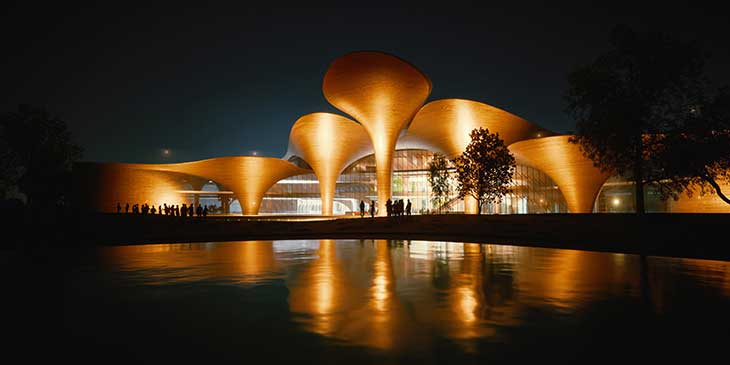
Zaha Hadid Architects (ZHA) has been appointed to design the Alisher Navoi International Scientific Research Centre in New Tashkent, an innovative complex celebrating Uzbekistan’s deep-rooted literary and musical heritage. The center will house the Navoi State Museum of Literature, a 400-seat auditorium, an international research institute, and a residential school for students focusing on Uzbek language, literature, and music. Positioned as the cultural heart of a new urban quarter, this project will enhance Tashkent’s growing reputation as a city of artistic and educational excellence.
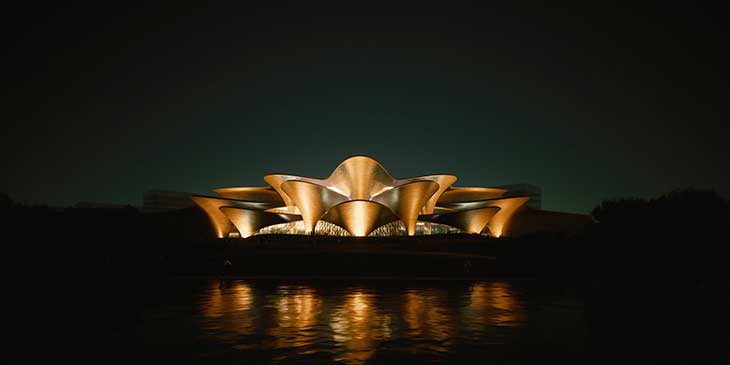
Named after the 15th-century poet and cultural icon Alisher Navoi, the center is dedicated to fostering a rich dialogue between the arts, scholarship, and community. Navoi’s legacy, which has influenced generations, is reflected in the center’s design that emphasizes collaboration across disciplines. ZHA envisions an integrated space where literature, music, and performing arts coexist, encouraging interaction among students, scholars, and local artists in an environment designed to inspire.
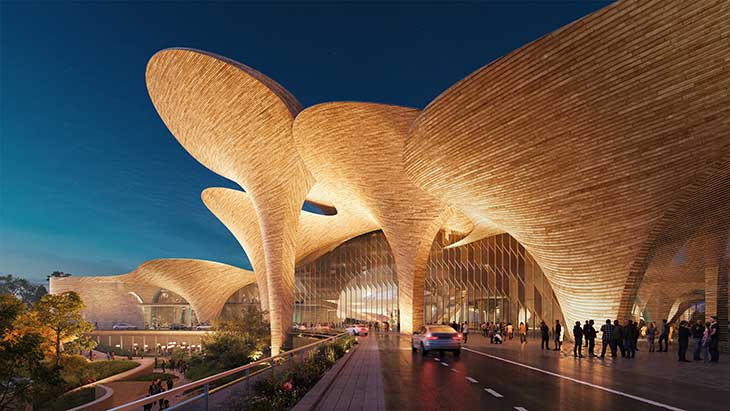
The architecture draws heavily on Uzbekistan’s traditional forms, incorporating locally produced bricks and sweeping arched facades that echo the region’s architectural heritage. Courtyards, an essential element of Uzbek design, bring natural light and ventilation to the structure, serving as gathering spaces and quiet areas for reflection. By reinterpreting these vernacular features with a modern touch, ZHA blends cultural significance with contemporary design, ensuring the center feels both grounded in tradition and forward-looking.

Mindful of Tashkent’s climate, the center incorporates passive cooling strategies inspired by the wind towers of Central Asia and the Middle East. Hollow, arching structures capture breezes and channel them into the building, naturally cooling the interior. This method, rooted in local architectural practices, will be supported by fans and misting systems during the warmest months, providing an energy-efficient climate control solution. The design aligns with the project’s sustainable goals, minimizing reliance on artificial cooling.
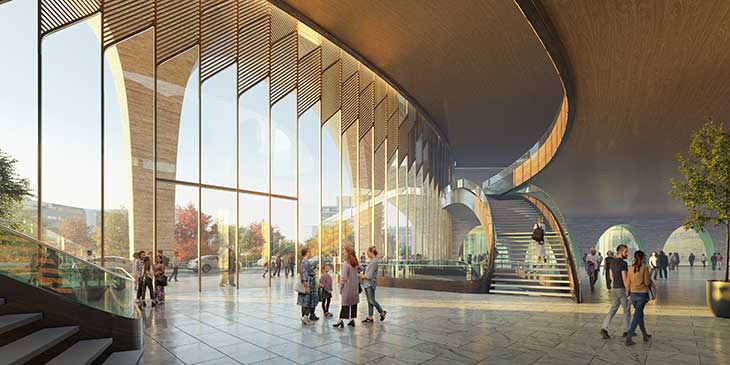
In addition to the wind-cooling system, the architecture uses thermal chimneys to regulate temperatures on calm days, allowing warmer air to rise and escape while pulling cooler air into the space below. Courtyards and skylights add another layer of climate control, introducing natural light and enhancing airflow while providing deep overhangs to protect against summer heat. During colder months, these features allow sunlight to enter and warm the interiors, creating a comfortable environment year-round.

At the core of the center, the Navoi State Museum of Literature will house rare manuscripts, research archives, and 13 exhibition halls, offering a comprehensive journey through Uzbek literary history. The museum also provides restoration facilities for historical works, positioning itself as a guardian of cultural heritage. Surrounding the main structure, landscaped terraces and amphitheaters inspired by the rhythms of Shashmaqom music create an open, communal space where the community can gather, celebrate, and perform. By merging tradition with modernity, the Alisher Navoi International Scientific Research Centre aims to become a landmark of cultural engagement and artistic exploration in Uzbekistan.
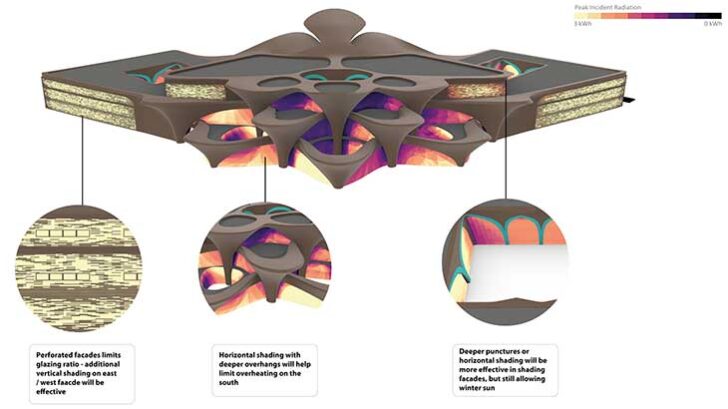
Design:Zaha Hadid Architects (ZHA)
ZHA Principal: Patrik Schumacher
ZHA Project Director:Paolo Matteuzzi
ZHA Design Directors: Paolo Matteuzzi, Paulo Flores
ZHA Project Architects:Effie Nakajima, Karoly Markos, Luca Ruggeri, Davide Del Giudice
ZHA Project Team:Andrei-Ciprian Cojocaru, Canon Lee, Ceren Tekin, Diego Ariza, Ekaterina Smirnova, Jose Navarrete Deza, Keyur Mistry, Ripple Patel, Sattor Jabbor, Ying Zhu
Structural Engineers: Buro Happold
Environmental Consultant: Buro Happold
MEP: Burro Happold
Masterplan Consultancy: Buro Happold



